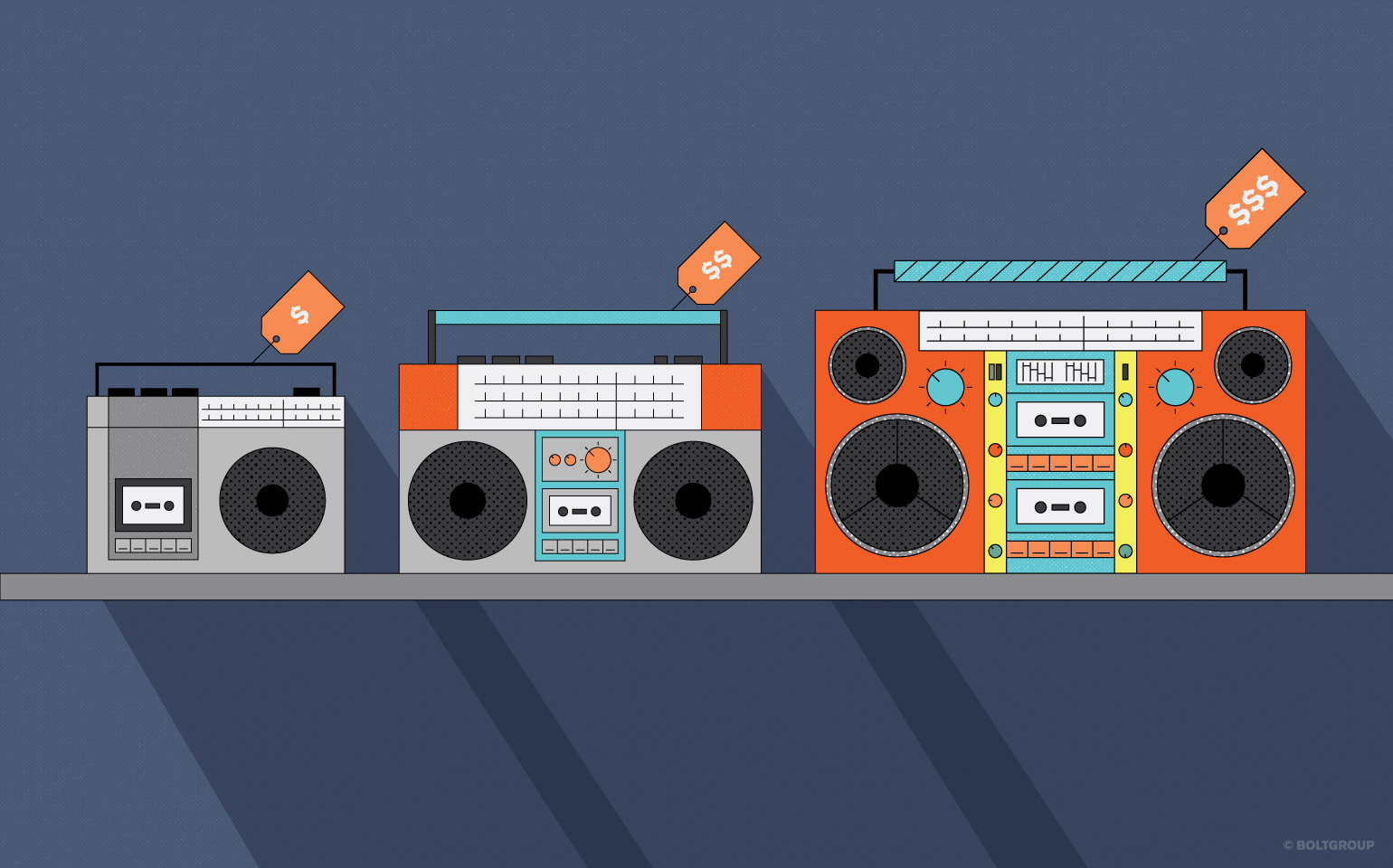For decades, retailers have enjoyed incredible success with a “good, better, best” product range, offering consumers options from basic to premium to deluxe. Here’s how it usually works: customers on a tight budget can choose a bare-bones “good” model, while high rollers who want it all can opt for the “best”—usually a featured-up version of the “good” product. Right in the middle, for the rest of us, there is “better”. Not too big, not too small. Just right.
Retailers argue that this works to get more customers by offering a price point for every budget. Your stripped down “good” products earn you more customers who can’t afford your standard offering. Plus, you can collect a higher margin on premium “best” products.
But is “Good, Better, Best” right for your brand? Should your product line strategy simply reflect a retailer’s pricing strategy? It depends. Do you view your customers as good, better, and best?
Somewhere along the way, a retailer’s pricing strategy became the de-facto product line strategy for countless brands in everything from airlines to automobiles to ice skates. The trouble with using the “Good, Better, Best” model to define your product offering is that it doesn’t reflect who your customers and users really are.
Instead of catering your product line to meet the price range needs of your retailer, try tailoring your product line to your customers. Take the time to understand who your customer segments are and define your product range based on the needs of each segment. What does the product mean to them? How does it fit into their life? And how should it be designed and priced to make sure they will buy it and love it?
Implicit in the “Good, Better, Best” model is that some of your products are better than others. It’s common for retailers to fall in love with a product BOLTGROUP is developing and then to ask for a cheaper version with some of the features stripped off. “Good, Better, Best,” they cheerfully quip. That’s when we ask if it will harm their brand. Without a valuable brand, their product is easily replaceable at retail. To build and maintain value in your brand, you need to maintain consistent quality and customer satisfaction. Every product should be the “best” product for its own customer segment.
But let’s be honest: the retailer is your #1 customer, right? Without them, who’s going to sell your products? You can’t walk away from the table. But you can make a counter-offer. Here are some ways to push back against the commoditization of your brand at retail:
- If lower shelf and price point don’t fit your brand, don’t pursue that angle. Offer an alternative product, under a different name, that won’t erode your prime-time brand.
- Invest in your brand to drive consumer demand. Strive to provide meaningful, delightful, consistent product and brand experiences that your retailers’ customers can’t live without. If consumers are begging for your products, it improves your negotiating position with the retailer.
- Even if the retailer is demanding a “Good, Better, Best” offering, your business’s internal attitude and practice should be to understand each customer segment and their purchase drivers, and then provide the “Best, Best, Best” to each segment. Innovate at each price point—and be loved for it.
